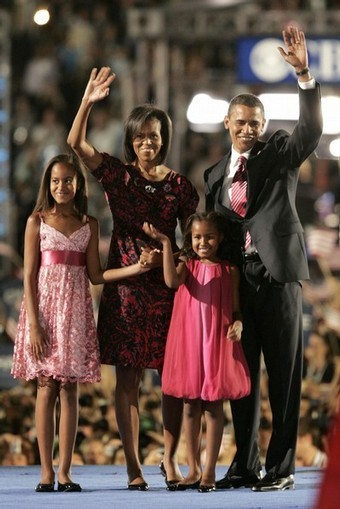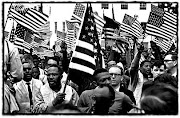
 One place to begin is with a map made by two ambitious brothers to the New World for travel by sea, rather than overland to acquire bulk Asian goods more easily after the 1453 fall of the Ottoman Empire. Christopher Columbus received the 1492 patronage of Spain's King Ferdinand II of Aragon and Castilian warrior Queen, Isabella, to go forth and conquer as it were with the Santa Maria, La Niña & La Pinta. The Spanish treasury was depleted from the latest round of European Wars. Imperial Empire. Fateful decisions. Columbus forcibly imported Haitian people specimens to show off in Seville upon his 1493
One place to begin is with a map made by two ambitious brothers to the New World for travel by sea, rather than overland to acquire bulk Asian goods more easily after the 1453 fall of the Ottoman Empire. Christopher Columbus received the 1492 patronage of Spain's King Ferdinand II of Aragon and Castilian warrior Queen, Isabella, to go forth and conquer as it were with the Santa Maria, La Niña & La Pinta. The Spanish treasury was depleted from the latest round of European Wars. Imperial Empire. Fateful decisions. Columbus forcibly imported Haitian people specimens to show off in Seville upon his 1493 return. His second trip was brutal with killing and the practice of bringing back human chattel for Europeans to purchase for their own amusements.
return. His second trip was brutal with killing and the practice of bringing back human chattel for Europeans to purchase for their own amusements.America's First People called Indians or Native Americans endured many attempts by Europeans to establish a foothold on their land and to convert them to Christianity. The 1607 attempt that made America, started in founding Jamestown. Thanksgiving sprouted as a concept. As a tobacco farm prospered, Matoaka - renamed Pocahontas, was made to marry John Rolfe who issued her the new name, Lady Rebecca. Battles continued between the developers/plantation owners and the Powhatan, ending with the murder of Pocahontas's brother, the Chief, while in custody. No one truly knows
 her interpretation of events, though many Europeans mythologized her, especially after she died in England.
her interpretation of events, though many Europeans mythologized her, especially after she died in England.Slaves became fashionable and necessary to farm huge plantations, especially as indigenous peoples died from disease and famine brought by the usurpers. The Europeans also brought the idea of commerce, representative governments for the aristocratic white men and the horrors of the Middle Passage. America embraced the land grab and purchased a Louisiana package, ratcheting up the need for people and those that would be
 made to serve the richest of many of them. Slavery, America's original sin and permanent stain.
made to serve the richest of many of them. Slavery, America's original sin and permanent stain.Our Constitution was written without a resolution to slavery, with the sweat, blood and tears of each slave and slaveholder mixed in all that follows. Thomas Jefferson wrote, he trembled to fear that God was Just. Yet, economic politics held sway. Incorporated by the Founding Fathers, each black man was counted for census purposes as
A potato famine saw an influx of Irish immigrants to the eastern shores of the United States. The only saving grace for them integrating into the American fold was that they were white. Those of Chinese descent working on the American railroads and mining for gold in California suffered other indignities. Mexico suffered a grievous defeat at the hands of Americans in 1848. The loss of land crystallized on this content a harsher vision of eminent domain. Texas considered itself a nation in its own right until the US
 annexed it in 1845. Harriet Tubman suffered a horrible head injury from an enraged slave master, yet still managed to use the legal system and found the Underground Railroad. White abolitionists took to visceral arguments stirring strong resentment in southern states.
annexed it in 1845. Harriet Tubman suffered a horrible head injury from an enraged slave master, yet still managed to use the legal system and found the Underground Railroad. White abolitionists took to visceral arguments stirring strong resentment in southern states.The 16th president, ambivalent, sometimes hostile to the cause of Negroes, issued the sweeping Executive Order to free slaves during the Civil War in one fell swoop pertaining to statuses resulting from war. Abraham Lincoln had no power to free all in every state as the Emancipation Proclamation makes clear. Lincoln sustained a reputation for hard nosed pragmatism, bucked up by his friend Frederick Douglass, The Lion of Anacostia, a free bi-racial ex-slave, inspiring millions of modern Americans with his bicentennial looming as a celebration in 2009. How many will know that Victoria Woodhull was the presidential candidate with Frederick Douglass, her running mate on the Equal Rights Party Ticket?
Huddled masses yearning to be free greeted millions of immigrants as they processed through Ellis Island, overlooked by France's gift of The Statue of Liberty, having their names anglicized, but moving into culturally similar neighborhoods. years prior, ethnic groups of Dutch, Irish, Polish, German and Scandinavians among indentured servants and others, moved en mass to take advantage of the Homestead Act which displaced many
 Native Americans from lands they farmed or held for buffalo for centuries. Indians were placed on supposedly sovereign reservations. Immigration became a hot button after the 14th Amendment was interpreted by an 1898 Supreme Court decision to conclude people born on American soil were citizens. At the turn of the century, restrictive laws targeting Asians escalated with the Geary Act. Not repealed until after segregating Japanese in the 48 states in internment camps during the middle of World War II. Japanese immigration to Hawaii
Native Americans from lands they farmed or held for buffalo for centuries. Indians were placed on supposedly sovereign reservations. Immigration became a hot button after the 14th Amendment was interpreted by an 1898 Supreme Court decision to conclude people born on American soil were citizens. At the turn of the century, restrictive laws targeting Asians escalated with the Geary Act. Not repealed until after segregating Japanese in the 48 states in internment camps during the middle of World War II. Japanese immigration to HawaiiJim Crow laws took effect following the abysmal reconstruction era presidency of Andrew Johnson. The Ku Klux Klan tried to impose the will of a white superiority mimicked by Europe's Hitler with for an Aryan world. Americans tried to turn inward and isolate itself from the world. The assassination of an Archduke by a Bosnian Serb triggered a terrible war that ended with the 1918 Treaty of Versailles orchestrated by one of the most racist presidents ever, Woodrow Wilson, a
 Democrat, who previewed the racist tripe of Birth of a Nation in the White House. Hitler garnered power seeking to impose his white, exclude any one of semitic origin, will on the world, even after Jesse Owens won a gold medal in Germany.
Democrat, who previewed the racist tripe of Birth of a Nation in the White House. Hitler garnered power seeking to impose his white, exclude any one of semitic origin, will on the world, even after Jesse Owens won a gold medal in Germany.Japanese imperialism made their presence known by bombing the US fleet at Pearl Harbor, a base placed on a multi-cultural US territory after the US triggered the overthrow of Hawaii's Queen. Millions of Americans of all colors and creeds joined to fight for the cause of freedom because the day that lived in infamy inspired all to sacrifice for the war effort. Barack Obama's grandmother riveted and his grandfather
 marched. They were not alone. Japanese surrender came after Harry S Truman ordered the Enola Gay to drop The Thin Man and Fat Man atomic bombs on Hiroshima and Nagasaki.
marched. They were not alone. Japanese surrender came after Harry S Truman ordered the Enola Gay to drop The Thin Man and Fat Man atomic bombs on Hiroshima and Nagasaki.In the Negro community, culture prospered while injustices propagated wantonly. Quality of life issues stayed separate and supposedly equal as outlined in the Dredd Scott case before the Civil War. After WWII, the US military was integrated by presidential action. A young civil rights lawyer took civilian cases for the NAACP involving education. In 1953, Brown versus the Board of Education became the law of the land per the Warren Court. A picture of Supreme Court Justice Thurgood Marshall hangs in Senator Obama's office on capital Hill.
A young seamstress and Alabama NAACP secretary was tired when she got on a bus and sat where there was an open seat. The white driver told her to get up. She refused. Rosa parks emboldened a 27 year old preacher to lead a year long boycott of a bus company that went darn near broke trying to keep black folks in their place at the back of bus. Separate drinking fountains, lunch counters infuriated young people both black and white and they embarked on Freedom Rides as part of the Children's Crusade. The unifying factor was the call for nonviolence no matter the
 provocation of fire hoses, snarling German Shepard dogs and the beatings, oh the beatings. Firebombs and Molotov cocktails were launched, Edgar Medgars was shot in his driveway in Mississippi, yet the Civil Rights movement would not stop.
provocation of fire hoses, snarling German Shepard dogs and the beatings, oh the beatings. Firebombs and Molotov cocktails were launched, Edgar Medgars was shot in his driveway in Mississippi, yet the Civil Rights movement would not stop.A bundle of joy arrived in Hawai'i. His parents were of Kenyan and Irish American stock. Their baby was born in the the brand new state of Hawaii in 1961. His name was Barack Obama. Two years later, while he was learning to walk and run, that young preacher gave a seminal speech on the steps Of the Lincoln Memorial on while a young President looked on with his brother Bobby. Some how many of the threads in this nation's history wind into an American flag made from the trials and tribulations of so many.
Out of all this, peoples' Hopes, no matter how thin the string, held to believe that the next day would be better than the last in America. Part II coming.
Narrative of the Life of a Slave from Frederick Douglass retains its power. Now in Paperback for less than $5 US.







 Haiti, already suffering the tortures of the damned, watched precious crops go under the stalled onslaught of water from Hurricane Gustav. A trash filled Port-au-Prince and other populated areas are starting to see floods and no emergency assistance in sight.
Haiti, already suffering the tortures of the damned, watched precious crops go under the stalled onslaught of water from Hurricane Gustav. A trash filled Port-au-Prince and other populated areas are starting to see floods and no emergency assistance in sight. 







 Automatically, Egypt takes pride of place when mummy find announcements are made. But Peru is unraveling the conventional wisdom with the news that archaeologists in the middle of the capital city of Lima, have unearthed a 1300 year old lady mummy. Unraveling the intricacies of the
Automatically, Egypt takes pride of place when mummy find announcements are made. But Peru is unraveling the conventional wisdom with the news that archaeologists in the middle of the capital city of Lima, have unearthed a 1300 year old lady mummy. Unraveling the intricacies of the  The woman was from the
The woman was from the 





 some of physics deepest secrets will play out in on computers in a science red carpet moment. In a monster opening box office, September 10th looms large for
some of physics deepest secrets will play out in on computers in a science red carpet moment. In a monster opening box office, September 10th looms large for 















 However, Mills told The Press newspaper that
However, Mills told The Press newspaper that 
 Bajaur, like other tribal district
Bajaur, like other tribal district











